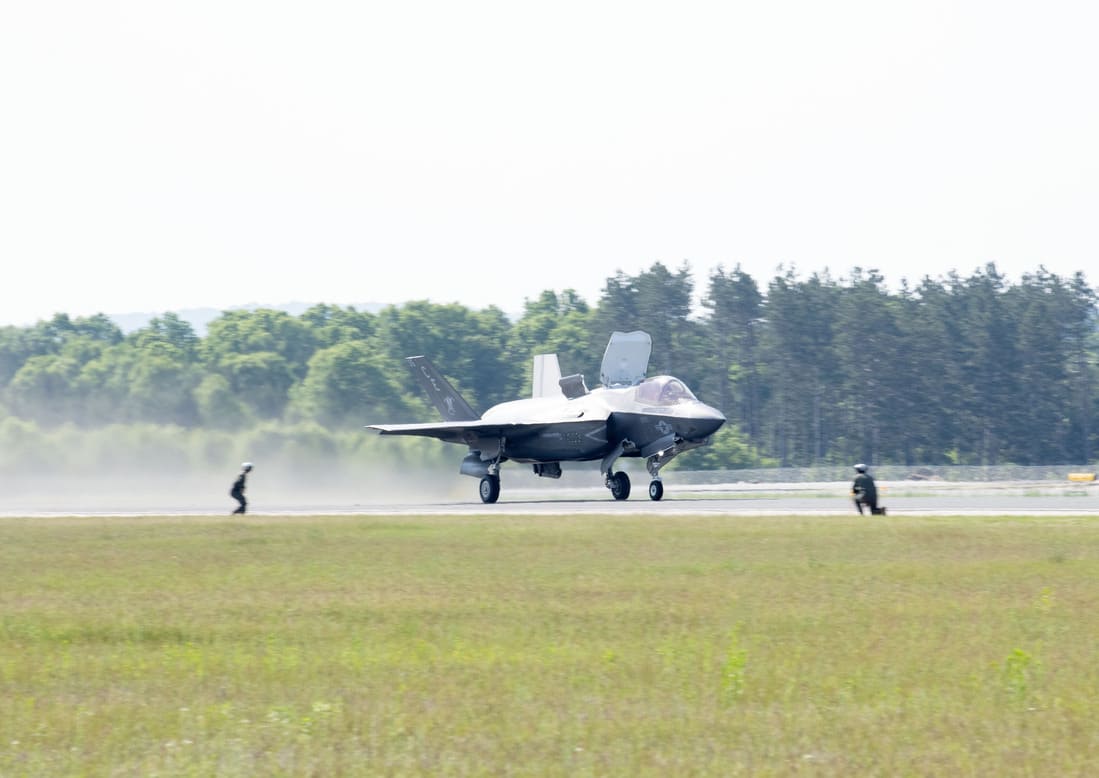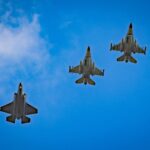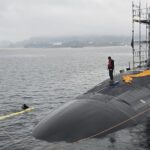A Swiss parliamentary commission is auditing the 2022 Letter of Offer and Acceptance for 36 F-35A jets after Bern acknowledged an overrun beyond the CHF 6 billion approved by parliament. Government figures from late summer put the extra cost between CHF 650 million and CHF 1.3 billion, tied to current lot pricing and U.S. cost drivers.
Talks with Washington did not lock a firm total, so the 2022 paperwork left Switzerland exposed to later lot prices across jets, training, and logistics. Officials confirm the aircraft count and delivery window, not a binding total price. Public consent rests on the 2020 referendum, which backed new fighters at CHF 6 billion by 50.1 percent, so any change still lives inside that political boundary.
Pricing drivers and tariffs
Price formation now hinges on U.S. Lot 18 terms. U.S. program officials cite inflation, raw material jumps, and supply chain friction. A program source linked Switzerland’s 2022 paperwork to those pressures, pointing to a several-hundred-million-franc uptick. According to industry sources, higher costs for specialty alloys and electronics lift recurring flyaway and some support items.
In August, the United States imposed a 39 percent tariff on Swiss goods, which rippled through trade and complicated talks on pricing and offsets tied to U.S. content. Swiss exports to the U.S. fell by more than a fifth that month when the rate took effect.
Audit timeline, legal review, and financing
The commission intends to deliver its report in November 2025. A defense ministry group is preparing funding options to cover the delta while keeping air policing and training milestones. The brief rules out a different aircraft or a restart of the selection.
Parliament’s legal services will test how far the government can adjust quantities or support elements under existing votes and appropriations. Practitioners expect any change in jet numbers will need explicit parliamentary approval, even if type and mission stay the same. Financing tools on the table include phased appropriations and internal reallocations to hold the count as high as possible without breaching the voter-set envelope. People familiar with the talks say Bern is reviewing whether support items front-loaded in 2022 can shift to later cycles without hurting induction.
A former head of the Federal Audit Office argued in June the 2022 file never locked a hard total. Parliament is now probing whether the government oversold price certainty or whether the LOA could reasonably have been read that way then.
Cost increase of CHF 650 million to CHF 1.3 billion for Swiss F-35 order
Government figures circulated in August and September lay out the overrun band relative to the CHF 6 billion package voters had in mind in 2020. Internal notes attribute the delta to U.S. production lot pricing in the current cycle, with inflation and raw material spikes prominent in the justification set. Ministry officials have described the upper bound as a risk buffer rather than a forecast.
Armasuisse has not published line-item tables that split aircraft, training, ammunition, logistics, and infrastructure at the new prices. People familiar with the paperwork say the uplift does not fall evenly across those lines, and that electronics and some consumables bear the sharpest rises. The office has also kept to the 2027 start for deliveries and will brief parliament again after the audit.
A former audit chief has argued publicly that the 2022 file never locked a hard total. That view now receives procedural attention in parliament, which wants to know whether the government oversold price certainty three years ago or whether the LOA could reasonably have been read that way at the time.
Parliamentary commission audit of 2022 contract and November 2025 report
The commission’s job description focuses on the path from the 2021 down-select through the 2022 signing, the mechanics of cost updates since then, and the communications with U.S. authorities that produced the current gap on price expectations. The report deadline sits in November 2025. The defense ministry has a parallel working group to convert the audit’s findings into concrete program actions without stopping induction work.
Parliament’s legal services will examine how far the government can adjust quantities or support elements under existing votes and appropriations. Legal practitioners close to the committees anticipate that any change in the number of jets will require explicit parliamentary blessing, even if the type and mission remain the same. Parties on both sides expect a dense session once the report lands.
Tariffs at 39 percent and Lot 18 pricing pressure on unit cost
August tariffs raised the price of U.S. goods landing in Switzerland and squeezed Swiss exports headed the other way. Aerospace trade sits near the center of that policy shock, with companies adjusting shipping plans and, in some cases, pausing deliveries to the United States. The hit to margins and the complexity of exemptions raised program-management risk for imported spares and for services performed in U.S. facilities.
U.S. program sources continue to describe higher underlying costs in the F-35 production system, separate from tariffs. Inflation, raw material costs, and supplier health are the top issues they cite. Switzerland’s numbers sit downstream of those dynamics because the 2022 agreement left later lot prices to be finalized along with other customers.
Fleet size review without alternative aircraft and delivery window 2027 to 2030
Bern’s working group is updating the 2017 air defense requirement to see how many F-35A aircraft are needed to meet alert coverage and training throughput if the total falls below 36. The ministry has removed replacement types from consideration and kept the delivery window aligned with earlier planning. The air force continues infrastructure upgrades at home bases to meet the induction schedule.
Training pipelines and software readiness are the two timing gates Swiss planners watch most closely. The plan foresees early aircraft supporting instructor conversion and national evaluation before full operational status, with later software drops enabling advanced modes. Officials remain aligned with U.S. software release schedules to avoid idle airframes and to keep pilot currency intact during transition from legacy fleets.
REFERENCE SOURCES
- https://subscriber.politicopro.com/article/2025/08/switzerland-sticks-with-us-f-35-fighters-despite-local-backlash-00507721
- https://www.defensenews.com/global/europe/2025/09/17/swiss-panel-audits-2022-contract-as-f-35-cost-surprise-may-shrink-buy/
- https://www.reuters.com/business/aerospace-defense/swiss-see-risk-tariffs-increasing-cost-us-f-35a-jets-2025-08-13/
- https://breakingdefense.com/2025/09/f-35-lot-18-price-increase-coming-due-to-inflation-rising-raw-material-cost-pentagon/
- https://www.reuters.com/business/swiss-exports-us-drop-over-fifth-after-trump-tariffs-2025-09-18/
- https://www.reuters.com/world/europe/swiss-plane-maker-pilatus-halts-business-jet-deliveries-us-over-tariffs-2025-08-08/
- https://www.swissinfo.ch/eng/various/parliamentary-oversight-investigates-the-f-35-purchase/89610414
- https://www.swissinfo.ch/eng/various/f-35-costs-were-never-fixed-former-swiss-audit-chief/89591180
- https://www.aerotime.aero/articles/switzerland-f35a-delivery-2027



